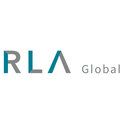Wellness drives record TRevPAR results after the pandemic

Hotels with wellness revenues exceeding US$1mn generated 126% more in TRevPAR in 2021 than those with wellness revenues of less than US$1mn, according to the latest Wellness Real Estate Report by RLA Global.
Average TRevPAR at properties with significant wellness offerings was still 35% below pre-Covid levels in 2019, but this gap was much higher at 44% and 55%, respectively, at hotels with minor and no wellness offerings.
Roger A. Allen, Group CEO, RLA Global, said: "After a year of pandemic and extended hotel closures, 2021 was about recovery and hotel performances show a clearly positive trend in 2021 compared to 2020. When looking solely from a revenue perspective, hotels with significant wellness offerings seem to have achieved better results than properties with minor or no wellness. The pandemic resulted in new revenue management strategies, giving priorities to average daily rates (ADR) over occupancy."
Although properties with major wellness seem to be making bigger progress in recovery, at least in revenue generation, GOP levels counterbalance this process. Findings of the latest Wellness Real Estate Report show that properties with minor wellness operations outperformed major wellness hotels in average monthly occupancy levels throughout 2021 and hotels without wellness had 6% wider GOP margin in average.
RLA Global warns that while the analysis of the post-pandemic revenue trends seems to show that major wellness properties have a strong competitive advantage, it is important to put that success into context and understand the costs attached to such a recovery in terms of operating costs, payroll and investment.
Michael Grove, Chief Operating Officer, Hotstats, which participated in the report, said: "High levels of global inflation, combined with supply chain issues in hotel supplies and labour and compounded by energy cost increases have replaced much of the savings hotels had found during the last two years. These areas largely impact the wellness sector more than most as generally they carry a larger fixed cost base and labour force and higher levels of energy consumption. A key consideration for the coming years."
RLA Global said the differences revealed in bottom-line performances should provide investors with a cautionary note when considering the level of wellness-related investment in a hotel. Allen said: "We believe there will be a few winners and potentially many losers as the competitive landscape heats up with both new wellness-related properties and as existing hotels try to reposition their offering to compete for the wellness audience".
The latest Wellness Real Estate Report also highlighted two industry trends that will last and are expected to continue influencing wellness in real estate. One of them is the sustained appeal of branded residences, which attract renewed customer interest as a result of growing global wealth and the post-Covid demand for real estate in less crowded, non-urban environments.
Riyan Itani, MRICS, Director - Head of Consultancy, Global Residential Development, Savills, said: "For most operators and buyers, wellness amenities will be key going forward. Indeed, most wellness amenities can be found in over 50% of the branded developments we have studied. And for brands looking to bring new properties to market, they need to consider not only what the current needs are for residents but also what residents will be looking for in terms of amenity offering when the project opens."
The other lasting industry trend identified is the increasing popularity of meaningful experiential holidays. Whether these getaways are intense adrenaline-fuelled experiences, immersive wellbeing offerings, specialized health improvements such as strengthening mental health and specific experience-led pre-packaged holidays, there is no doubt that ‘experience’ should be at the forefront of hotel resorts and destinations.
The full report can be downloaded at www.wellnessrealestatereport.com
Roger A. Allen
Group CEO of RLA Global
RLA Global
